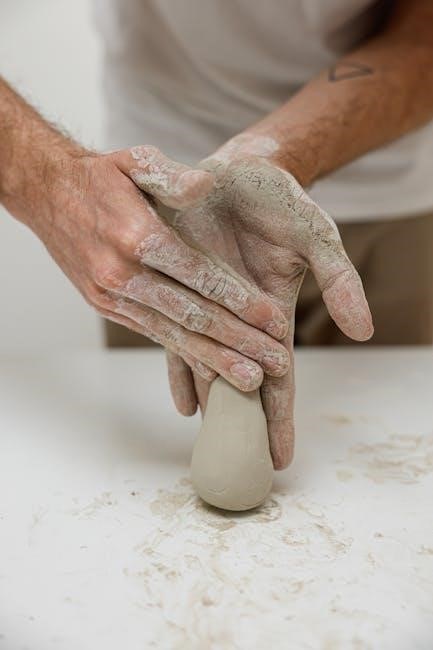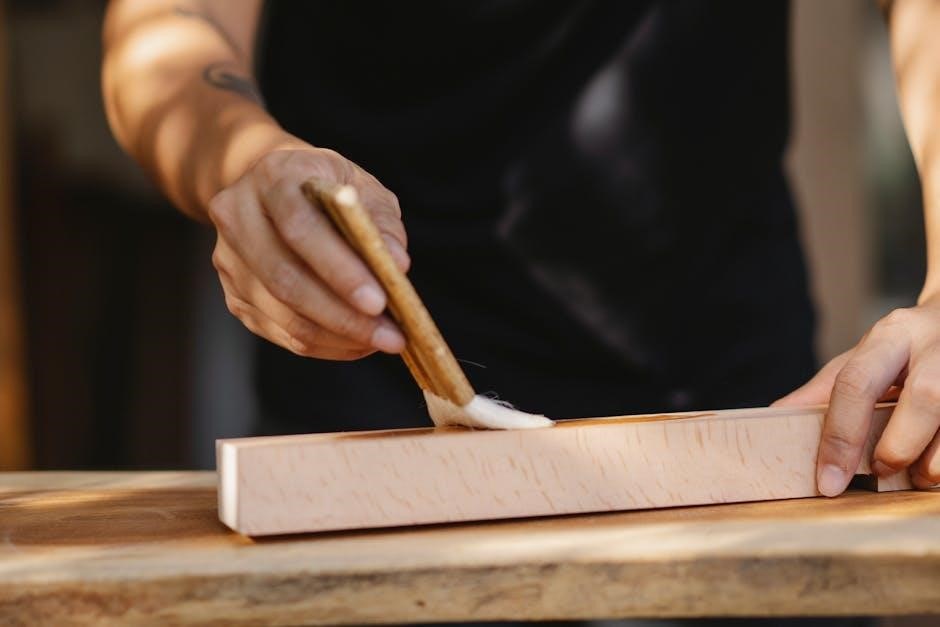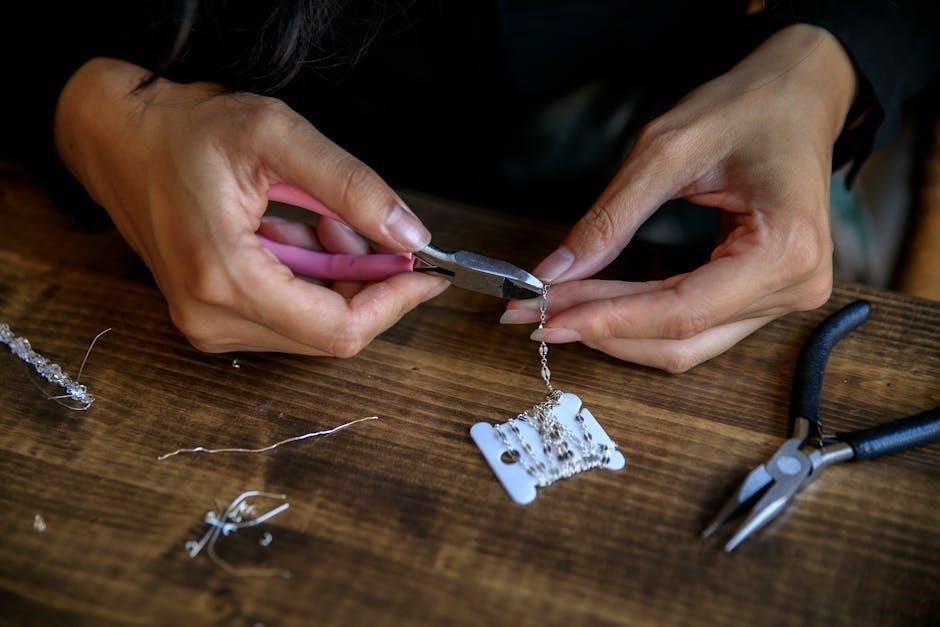frigidaire gallery refrigerator ice maker manual

Frigidaire Gallery Refrigerator Ice Maker Manual: A Comprehensive Guide
This guide offers detailed instructions for resolving common Frigidaire Gallery ice maker problems‚ often avoiding costly repairs. Expert solutions and a step-by-step approach
ensure optimal ice production and appliance performance‚ keeping your beverages perfectly chilled throughout the year.
Understanding Your Ice Maker
Your Frigidaire Gallery ice maker operates through a fascinating cycle‚ beginning with water filling the ice mold. This water then freezes‚ forming ice cubes‚ which are subsequently ejected into the ice bin. The ice maker relies on several key components working in harmony‚ including the water inlet valve‚ the ice maker module‚ and the ice level detector arm.
The water inlet valve controls the flow of water into the ice maker‚ while the module initiates the freezing process. Crucially‚ the ice level detector arm prevents overfilling by signaling the ice maker to stop production when the bin reaches capacity. Familiarizing yourself with these components and their functions is the first step towards effective troubleshooting. Understanding this system empowers you to diagnose and address issues efficiently‚ ensuring a consistent supply of refreshing ice.

Common Ice Maker Issues & Troubleshooting
Addressing typical problems like no ice production‚ small or misshapen cubes‚ overflows‚ or unusual noises is often straightforward. This section provides targeted solutions for a smoothly functioning ice maker.
Ice Maker Not Producing Ice
If your Frigidaire Gallery ice maker isn’t producing ice‚ several factors could be at play. First‚ verify the water supply line is correctly connected and the water supply valve is fully open. A frozen water line is a common culprit; inspect the line for any kinks or ice buildup‚ especially behind the refrigerator.
Next‚ check the ice maker’s on/off switch – it might be accidentally turned off. Also‚ examine the ice level detector arm; if it’s stuck in the “full” position‚ ice production will halt. Ensure the freezer temperature is set correctly‚ ideally around 0°F (-18°C)‚ as warmer temperatures can impede ice formation. Finally‚ a faulty water inlet valve or ice maker module could be the issue‚ requiring further testing or professional assistance. Remember to consult your refrigerator’s manual for specific troubleshooting steps related to your model.
Ice Maker Producing Small or Misshapen Ice
Small or oddly shaped ice cubes often indicate issues with water pressure or temperature regulation within your Frigidaire Gallery ice maker. Low water pressure can result in incomplete cube formation‚ leading to smaller‚ misshapen ice. Check the water supply line for kinks or obstructions and ensure the water inlet valve is fully open.
Fluctuating freezer temperatures can also contribute to this problem; verify the freezer is consistently maintaining 0°F (-18°C). A partially clogged water filter can restrict water flow‚ impacting ice cube size and shape. Consider replacing the water filter if it hasn’t been changed recently. In some cases‚ a malfunctioning ice maker module might be the cause‚ requiring professional diagnosis and repair. Regular maintenance‚ including filter replacement‚ can help prevent these issues.
Ice Maker Overflowing or Leaking
An overflowing or leaking ice maker in your Frigidaire Gallery refrigerator typically points to a problem with the water supply or drainage system. A stuck or faulty water inlet valve can continuously feed water into the ice maker‚ causing overflow. Inspect the valve for any obstructions or damage and test its functionality.
Leaking can also occur if the drain tube is clogged‚ preventing melted ice from escaping properly. Locate and clear the drain tube to ensure proper water drainage. Additionally‚ check the ice bin for cracks or damage that could contribute to leaks. A malfunctioning ice level detector arm might also cause the ice maker to overfill. Ensure the arm moves freely and isn’t obstructed. Promptly address any leaks to prevent water damage.
Ice Maker Making Unusual Noises
Unusual noises emanating from your Frigidaire Gallery refrigerator’s ice maker can indicate several potential issues. A common culprit is a failing ice maker module‚ which may produce grinding or clicking sounds as it attempts to cycle. Inspect the ice maker for any visible obstructions‚ such as ice buildup or foreign objects‚ that could be causing the noise.
Another possibility is a problem with the water inlet valve‚ which might vibrate or hum loudly if it’s malfunctioning. Listen closely to pinpoint the source of the noise. If the noise occurs during the ice ejection process‚ check the ice bin and ejector arm for damage or misalignment. A frozen water line can also create unusual sounds as ice expands and contracts. Addressing these issues promptly can prevent further damage and restore quiet operation.

Detailed Troubleshooting Steps
Follow a systematic process to diagnose ice maker issues. Begin by checking the water supply‚ then inspect the valve and module‚ and finally‚ examine the detector arm.
Checking the Water Supply
Ensuring a consistent water supply is the first step in troubleshooting your Frigidaire Gallery ice maker. Begin by verifying that the refrigerator is connected to a functioning water line. Check the house’s main water shut-off valve to confirm it’s fully open‚ allowing water flow to the refrigerator.
Next‚ inspect the water supply line itself for any kinks‚ bends‚ or obstructions that might restrict water passage. A clogged or frozen water line is a common culprit. If your refrigerator has an inline water filter‚ determine when it was last replaced; a clogged filter significantly reduces water pressure.
To test water flow‚ carefully disconnect the water line from the back of the refrigerator (after shutting off the water supply!) and direct it into a container. If water flows freely‚ the issue isn’t the supply line itself. However‚ if the flow is weak or nonexistent‚ further investigation of the water line and filter is necessary. Remember to reconnect the line securely after testing.
Inspecting the Water Inlet Valve
The water inlet valve controls the flow of water into the ice maker and should be inspected if the water supply is confirmed adequate. Located typically at the back of the refrigerator‚ this valve is an electrically controlled component. Before inspection‚ disconnect power to the refrigerator for safety.
Visually examine the valve for any signs of damage‚ such as cracks or leaks. Use a multimeter to test the valve’s solenoid for continuity; a lack of continuity indicates a faulty valve needing replacement. Even with electrical continuity‚ the valve can become clogged with sediment over time.
Carefully disconnect the water lines from the valve and check for obstructions. Some valves have screens that can be removed and cleaned. If the valve appears functional but isn’t opening when power is applied (verified with a multimeter during testing)‚ it likely requires replacement by a qualified technician. Always ensure proper sealing when reconnecting water lines.
Testing the Ice Maker Module
The ice maker module‚ often the most complex component‚ requires careful testing to diagnose issues. First‚ ensure the ice maker is switched ‘on’ within the refrigerator’s control panel. Next‚ locate the test button on the module itself – it’s usually a small‚ recessed button. Pressing this button should initiate a harvest cycle‚ forcing the ice maker to attempt to produce ice.
Observe if the module responds; listen for the motor running and the ice ejector attempting to cycle. If nothing happens‚ check the wiring harness connecting to the module for loose connections or damage. Use a multimeter to verify the module is receiving the correct voltage.

A lack of voltage suggests an electrical issue upstream‚ while correct voltage but no response indicates a faulty module needing replacement. Remember to disconnect power before any electrical testing and consult a qualified technician if unsure about any step.
Examining the Ice Level Detector Arm
The ice level detector arm is crucial for preventing overfilling; a faulty arm can cause overflowing or the ice maker to stop producing ice prematurely. Locate the arm within the ice bin – it’s typically a small‚ plastic lever. Ensure it moves freely up and down without obstruction from ice buildup.
Carefully inspect the arm for any visible cracks or breaks‚ as recalled models are prone to this issue. If damaged‚ the arm must be replaced to prevent plastic pieces from falling into the ice. Manually test the arm by gently lifting it; you should hear a click indicating it’s disengaging the ice maker.
If the click is absent or the arm feels loose‚ replacement is necessary. Remember to consult your refrigerator’s model number to ensure you order the correct replacement part. Regular inspection of this arm is vital for safe and efficient operation.

Frigidaire Gallery Ice Maker Recall Information
Electrolux recalled Frigidaire & Electrolux refrigerators due to a choking hazard from ice makers; the detector arm can break‚ posing risks to consumers.
Identifying Affected Models
Determining if your Frigidaire Gallery refrigerator is part of the recent recall requires careful model and serial number verification. Electrolux has identified 13 Frigidaire models‚ specifically side-by-side‚ top freezer‚ and multi-door refrigerators‚ alongside one Electrolux model‚ manufactured over the past two years.
Locating the model and serial number sticker – typically found inside the refrigerator compartment on the side walls – is the first crucial step. Compare this information against the list published by the U.S. Consumer Product Safety Commission (CPSC) and on the Frigidaire official website.
The recall centers around a potential breakage of the ice maker’s level detector arm‚ which can result in small‚ blue plastic pieces falling into the ice bin‚ creating a choking hazard. If your refrigerator’s model and serial number match those listed in the recall‚ discontinue ice maker use immediately and follow the provided steps for remediation.
Understanding the Choking Hazard
The primary concern driving the Frigidaire and Electrolux refrigerator recall is a significant choking hazard posed by the ice maker’s level detector arm. This component‚ responsible for sensing ice levels‚ is susceptible to breaking during normal operation. When fractured‚ the arm can disintegrate‚ releasing small‚ blue plastic pieces.

These fragments can fall into the ice bin‚ mixing with the usable ice. Unsuspecting consumers could ingest these pieces‚ presenting a choking risk‚ particularly for young children or individuals with difficulty swallowing. The potential for injury necessitates immediate action from owners of affected refrigerators.
Electrolux emphasizes the importance of ceasing ice maker usage if a recalled model is identified. The CPSC advises consumers to carefully inspect their ice bins for any foreign objects before each use until the repair is completed or a replacement is secured‚ mitigating the risk of accidental ingestion.

Steps to Take if You Own a Recalled Refrigerator
If you own a potentially affected Frigidaire or Electrolux refrigerator‚ several crucial steps should be taken immediately. First‚ discontinue using the ice maker function to prevent further breakage of the level detector arm and potential ingestion of plastic fragments.
Next‚ verify if your model and serial number are included in the recall by visiting the Electrolux recall website or contacting their customer support. Consumers are advised to register for the recall online to receive updates and instructions regarding the repair process.
Electrolux is offering a free repair‚ involving the replacement of the ice maker level arm. A qualified technician will perform this service. Alternatively‚ owners may be eligible for a refrigerator replacement in certain circumstances. Prioritize safety by carefully inspecting the ice bin for any blue plastic pieces before each use until the repair is finalized.

Preventative Maintenance for Your Ice Maker
Regular cleaning‚ timely water filter replacements‚ and checks for frozen lines are essential for optimal performance and longevity of your Frigidaire Gallery ice maker.
Regular Cleaning Procedures
Maintaining a clean ice maker is crucial for hygienic ice production and preventing malfunctions. Begin by emptying the ice bin and discarding any old or discolored ice. Next‚ wash the bin with warm‚ soapy water‚ ensuring a thorough rinse and complete drying before replacement.
The ice maker itself should be wiped down with a damp cloth and mild detergent. Pay close attention to the ice ejection chute and any visible components. Avoid harsh chemicals or abrasive cleaners‚ as these can damage the plastic parts. For stubborn residue‚ a solution of baking soda and water can be effective.
Periodically‚ inspect the water filter housing for any buildup or debris. A clean environment contributes significantly to the ice maker’s efficiency and the quality of the ice produced‚ ensuring a refreshing and safe experience.
Water Filter Replacement Schedule
Consistent water filter replacement is paramount for optimal ice maker performance and water quality. Frigidaire recommends replacing the water filter every six months‚ or more frequently if you notice a decrease in water flow or a change in ice clarity. Using a genuine Frigidaire filter ensures compatibility and maintains the appliance’s efficiency.
A clogged filter can restrict water supply‚ leading to slow ice production or complete stoppage. It can also affect the taste and odor of your ice and drinking water. Regular replacement prevents sediment and impurities from building up within the ice maker system.
To determine the correct filter for your model‚ consult your refrigerator’s manual or the Frigidaire website. Following this schedule guarantees consistently clean‚ fresh-tasting ice and prolongs the lifespan of your ice maker.
Checking for Frozen Water Lines
Frozen water lines are a common culprit behind ice maker malfunctions‚ restricting water flow and halting ice production. Regularly inspect the water line leading to the ice maker‚ particularly in colder environments or during winter months. Feel along the line for any icy patches or bulges‚ indicating a potential freeze.
If you suspect a frozen line‚ carefully thaw it using a hairdryer on a low setting‚ or wrap it with warm‚ damp towels. Avoid using direct heat sources like a heat gun‚ as this could damage the line. Ensure the water supply valve is fully open to maximize water pressure.
Preventative measures include ensuring adequate insulation around the water line and maintaining a consistent ambient temperature in the refrigerator compartment. Addressing frozen lines promptly will restore ice maker functionality and prevent potential water damage.

Locating Your Frigidaire Gallery Refrigerator’s Model Number
Finding your model number is crucial for accessing specific manuals and support resources. Locate the sticker‚ typically inside the refrigerator compartment or on the side.
Where to Find the Model Number Sticker
Identifying the location of your Frigidaire Gallery refrigerator’s model number sticker is the first step towards accessing specific troubleshooting guides and support. Typically‚ you’ll find this vital sticker inside the refrigerator compartment itself. Look for it on the upper wall‚ often near the top or side. It might be a small‚ silver or white label.
Alternatively‚ check the exterior of the refrigerator. Some models have the sticker on the side wall‚ near the door hinges. In certain instances‚ the sticker may be located on the back of the appliance‚ but this requires carefully moving the refrigerator to access it.
The sticker contains both the model number and the serial number. The model number is a combination of letters and numbers that uniquely identifies your refrigerator model. Having this information readily available will streamline the process of finding the correct manuals‚ parts‚ and assistance when needed.
Using the Model Number to Find Specific Manuals
Once you’ve located your Frigidaire Gallery refrigerator’s model number‚ you can easily access specific manuals and support resources. The Frigidaire official website is the primary source for downloadable manuals. Navigate to their support section and enter your model number into the search bar.
This will direct you to a dedicated page for your refrigerator model‚ containing a comprehensive library of documents‚ including the owner’s manual‚ installation guide‚ and troubleshooting guides specifically tailored to your appliance. You can view‚ download‚ or print these manuals for convenient reference.
Beyond the official website‚ appliance repair forums and communities often host a database of manuals. Utilizing your model number in searches within these platforms can yield additional resources and helpful information from other users experiencing similar issues. Accurate model identification ensures you receive the correct guidance.

Resources for Further Assistance
For additional support‚ explore the Frigidaire official website and dedicated appliance repair forums. These platforms offer expert advice and community solutions for your ice maker.
Frigidaire Official Website & Support
The Frigidaire official website is your primary resource for comprehensive support regarding your Gallery refrigerator’s ice maker. Here‚ you can access a vast library of downloadable manuals specifically tailored to your model number‚ offering detailed diagrams and troubleshooting steps. Beyond manuals‚ Frigidaire provides an extensive FAQ section addressing common ice maker issues‚ alongside helpful video tutorials demonstrating repair procedures.
For direct assistance‚ Frigidaire offers multiple contact options‚ including a dedicated phone support line staffed by trained technicians. You can also utilize their online chat feature for immediate answers to quick questions. Furthermore‚ the website features a parts store where you can directly purchase replacement components for your ice maker‚ ensuring compatibility and quality. Registering your appliance on the Frigidaire website unlocks additional benefits‚ such as exclusive promotions and timely recall notifications‚ keeping you informed about important safety updates.
Appliance Repair Forums & Communities
Online appliance repair forums and communities provide a valuable platform for connecting with experienced DIYers and seasoned technicians regarding your Frigidaire Gallery ice maker. These forums often host dedicated threads specifically addressing Frigidaire refrigerator issues‚ allowing you to search for solutions to problems similar to yours. You can post detailed descriptions of your ice maker’s malfunction‚ including the model number‚ and receive personalized advice from knowledgeable members.
Many communities feature extensive archives of past discussions‚ offering a wealth of information on common Frigidaire ice maker repairs. Sharing photos and videos of the issue can further assist in accurate diagnosis. However‚ always exercise caution when following advice from online forums‚ verifying information with official Frigidaire resources before attempting any repairs. Remember to prioritize safety and disconnect power before working on any appliance components.



Leave a Reply
You must be logged in to post a comment.